
Every once in a while, a story is so powerful that it gets stuck in your head. I guess that's what they mean when they say, 'Truth is stranger than fiction'. Today, I want to ask the question, which echoes the question of the documentary, 'Frank Hurley: The Man Who Made History'. The question is quite simply, 'How do we know what is real?'. The obvious answer might be that we see it with our own eyes, therefore - but, what if seeing wasn't believing?
Now, before we get started - let's introduce the subject of my favourite documentary: Frank Hurley.
He was an affable chat who was born in Sydney, Australia in 1885 - he lived a remarkable life, adventuring the world and living an extraordinary existence. He was a photographer and later a documentary film maker. He was a pioneer in his field - and he accompanied some of the most awesome adventures in human history.
But - speaking of history, we need to wonder: whose history? You see - in the absence of television, or reporters, or social media, or internet, Hurley was able to use his photographs and film to show the world unexplored places. In doing so, he pioneered photographic and cinematic trickery - distorting the world as it actually was, and selling art instead. - Passing it off, as fact.
It may raise the question around what is ethical, and indeed, how can one believe what we see in history books, if history can be "made" and "framed" in a particular way. Spoiler alert - Mr Hurley quite enjoyed getting in the photographs too, and he liked to frame himself as the hero adventurer. But moreover, Hurley would argue - it was impossible to depict war or the expanse of the polar regions - so what was wrong with combining images together to add drama to a shot, in the hope of communicating the theatre of the world?
Here's a picture of Captain Frank Hurley - captured by himself, in order to promote his own celebrity:
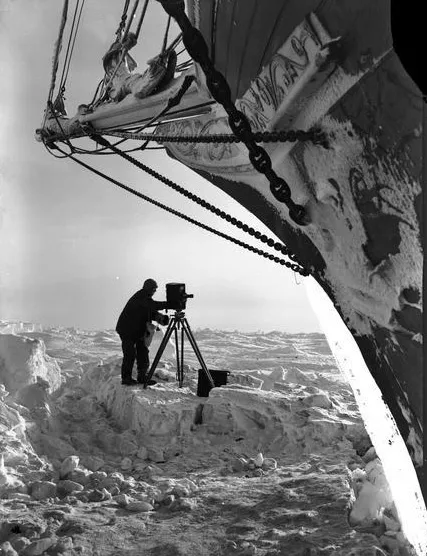

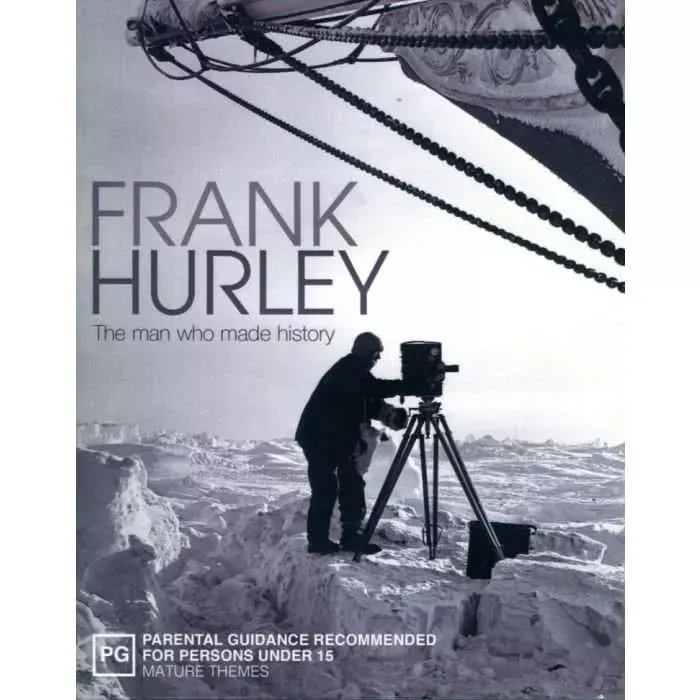
The film opens, with a musical interlude featuring E Minor - evoking ideas of discovery and bravery - A theme which would continue through the text. The documentary itself is organised around key events in Hurley's career.
Mawson's Antartic Expedition.
1911-1913
Hurley travels to the Antartic on a voyage of discovery with Mawson - he immediately sets about capturing footage, and creates one of his earliest films, 'Home of the Blizzard' - considered one of the first documentaries ever made. Through the contemporary documentary, we learn that not a lot of action was able to be captured by Hurley - and his end product would have been a lot of snow. However - Hurley understand that his role was dual: to be adventurer and showman - and he sought to make his end product more spectacular for his audience back in Australia - and in doing so, Historian Joanna Wright comments on film, 'It was a seminal moment in the history of photography; no one had realised how powerful imagers were, and Hurley did that' - by putting together a 'story' to go with the image, he was able to frame his film as 'a classic struggle between man and nature' and 'the oldest myth of all: the hero's journey'. A narrative which did not necessarily meet the facts - but who was going to argue with a film?
Shackleton's Imperial Trans Antarctic Expedition
1914-1916
Having made his reputation by accompanying Mawson - now, Hurley had set out to build his career and earn his coin. He immediately jumped on the next voyage of adventure - to the Antarctic, aboard Shacleton's boat. This is one of the most significant stories of survival attached to the polar regions - but, it's place in history is only secured by the photographs which help to communicate the story of struggle and heroism.
Below is an image of Shackleton's stranded ship - it is perhaps one of the most iconic images attributed to Hurley - and it made use of an early photographic trick - here, Hurley was using safety flares to create a light source to allow him to photograph the ship at night - it is his starting point, thinking about documentary photographs as art.
He also came to realise the importance of story - and the need for a story to have a beginning, a complication, a middle and a resolution. He came to understand that if he didn't have all of these elements - there was no story. For him - if something was missing, or not as grand as the narrative demanded, he would move to fabricate it.
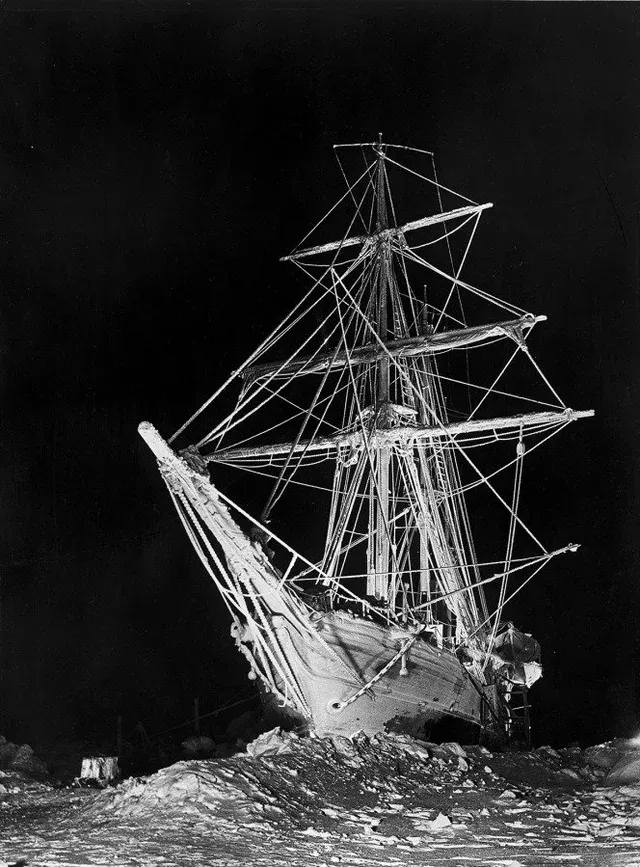
Here is a photograph of Shackleton leaving in a small boat, determined to go and get help to rescue the stranded crew. However - when it was given to the public, it was labelled as Shakleton's triumphant return to rescue the crew - which happened four months after this happy snap was taken.

And here is an image of Shackleton's small boat - ready to leave for help. The same two images sit next to each other - but you'll notice, that while this is the same photography - there are remarkable differences between the two. Hurley was beginning to create composite images - which he did not declare were doctored. By adding in the clouds in the backgound - the sky creates a sense of drama hanging over the send-off.
But - this was a sky from the Antarctic. It just wasn't there when the first image was taken? Is the distortion OK, or does it take away from the photograph as 'documented history'? It certainly helped Hurley sell the narrative of the intrepid adventures in a man vs nature battle of survival! - the documentary wonders: is it the role of photography to retell an exact historical truth, or to convey the feelings and emotions that ought to be evoked?
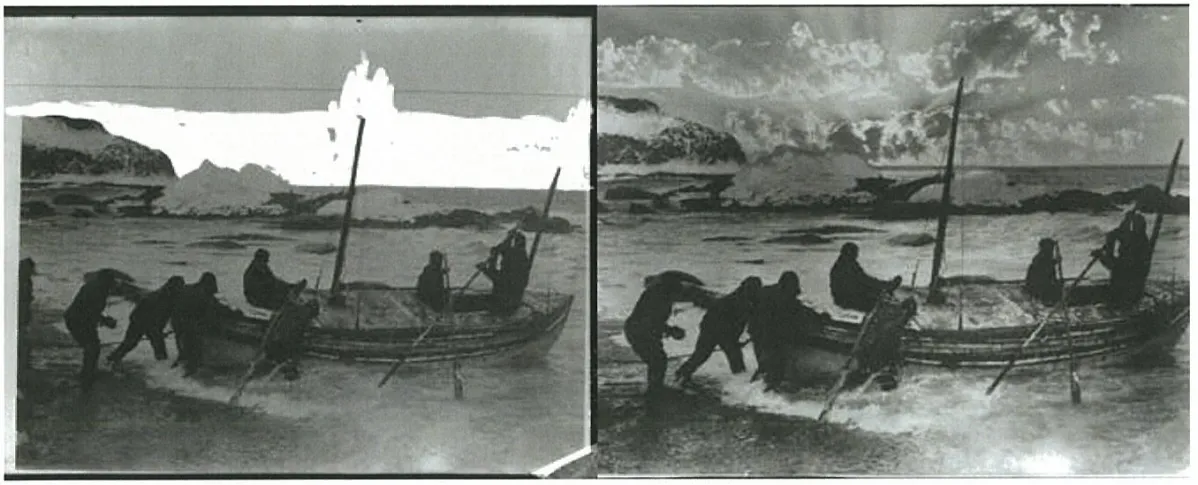
**World War 1
1917-1918
**
Hurley returned from his voyage and quickly sought out his next adventure - and he was appointed Captain in the Australian military - becoming the official photographer of the Australian Imperial Forces, serving out most of his time in France and Belgium on the Western Front.
In the Antarctic, Hurley had taken on the role of master-manipulator. Here, he continued to refine his art, expressing his dilemma: "To include the event on a single negative, I have tried and tried, but the results are hopeless". A permission, he would give himself, to start creating the 'theatre of war'.
Hurley exhibited his war images in London in 1918, stating in the catalogue: "I make no cliam to pictorial merit; the pictures are records and... are faithful reproductions of the scenes they portray". Yet - the official Australian War Reporter, Charles Bean - came out and declared them "Fakes" wanting instead the "literal truth. The unvarnished truth".
On Camera, Martyn Jolly offers his understanding of the composites which were being created: "The sat between photography, between cinema, and between history painting".
This is Hurley's most famous war image, which is displayed in the Australian War Memorial to this day - as a 'record' of the trenches. In this still from the film below, you can see that twelve images have been combined in order to create the drama and narrative Hurley wanted. He adds low flying planes over the top of trenches and explosions metres from the soldiers coming out of trenches - where they simply did not exist. Sure - they existed - but, just not in this proximity together - all in one negative.
The final image looked complete and did not have the squares on it - the additions below simply show how it was created.
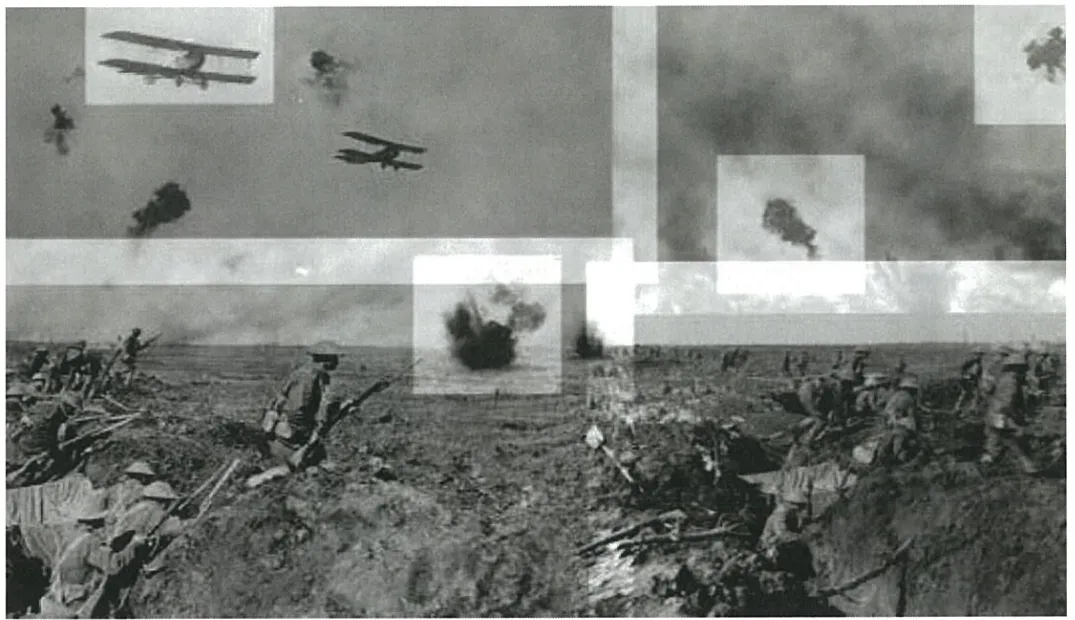
Papua New Guinea
1920
After the war, Hurley went into the deep jungles of Papua New Guinea - being one of the first explorers to do so. Hurley stated the purpose of the trip was to simply observe the peoples, but - narrative took over, and so did his entrepreneurship. He framed the stories as about lost people, giving glimpses of past cultures and societies. In New York - he even went as far as to claim the people were 'The Lost Tribe of Israel'.
Through this chapter, Hurley paints the tribes people as incredibly dangerous - adding to the heroism of Hurley as pioneer and explorer (continuing to build his reputation!). In playing up this danger in his documentary, the wondering is considered: "Just who was in danger of whom is open to question as Hurley carried a small arsenal of weapons". Along the way, significant cultural treasures were stolen from the local people, and in his diary, Hurley justifies this: "In the cause of Science, even an unfair exchange is no robbery. Had we raided a bank and carried off the bullion, we could scarcely have been more pleased with such desirable objects".
Yet - the irony of the situation is, Hurley did the tribes people an immense favour - by capturing on film the traditional dances and activities of a tribe who had never been visited by outsiders before. The images, despite the narration over the top - showed an authentic way of life which people in Papua New Guinea today are able to view, and understand their heritage.
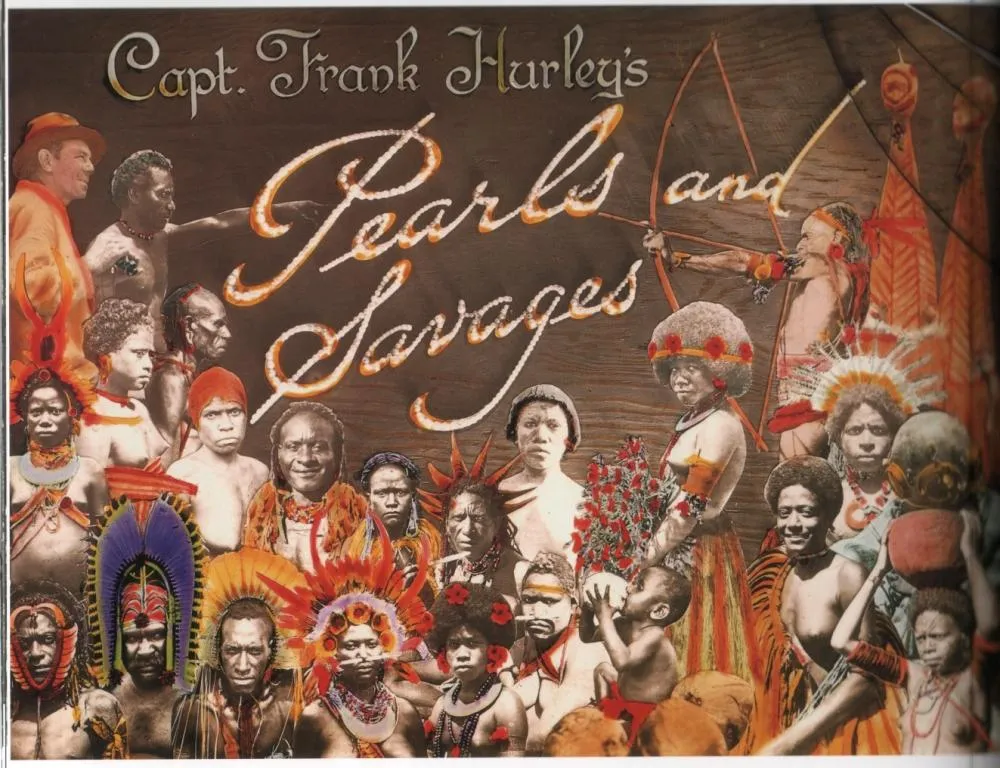
From there - Hurley continues in his career. Through the 1920s he actually becomes a proper film director, and is employed by CineSounds studio to direct a number of films. He also attends a further British, Australian and New Zealand research expedition. This allows his career to continue to develop, until the outbreak of World War 2. Given his age, he was rejected from the photography division three times, before 'old connections' helped ensure his enlistment, and he was sent to the Middle East where he sought to re-gain his old glory. This time, he set troops in position, much like a film director - called 'Action' - and went about getting the 'perfect shot' of battle, despite no battle taking place.
In the 1950s he returned to Australia, where he traveled around the country taking images - images which were used to tell Australians who we were were, and to sell the immigration story around the world. Inviting the world to come live in a happy place where everyone smiled.
Yet - the documentary tells us, 'Hurley photographed the nation as he wished it to be. Not as it really was'. All poverty was removed, along with any signs of disharmony, and race. Australia was, as depicted by Hurley - singular in appearance, and prosperous from coast to coast.
The documentary maker, Nasht, gets the final say as the piece draws to a close: "Hurley embellished many stories. Made up quite a few. But the one he couldn't fake, and the most enduring, was his own".

Why not check out the opening of the documentary to get a sense of the film and where it's going. You'll see a wide range of shots, and get to understand the documentary's lens a little bit clearer through the archival footage.
Frank Hurley The Man Who Made History - Opening Titles on Vimeo.



All images are associated with the film discussed, which is distributed and owned by Mitra Films.
Thanks for joining me!
